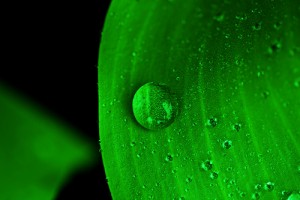4 ways alcohol beverage producers can reduce their packaging carbon footprint without sacrificing functionality or design.
Wineries and distilleries alike are showing their support for the environment by employing sustainable practices when it comes to their packaging. As consumers become more environmentally conscious, advances in sustainable materials and technologies are providing plenty of options for producers to “go green”.
- Bottles:
While glass bottles have always been the gold standard for wine packaging, more recently, some cost sensitive and earth conscious producers have been turning to more eco-friendly options that can help save the planet as well as the bottom line. Glass is infinitely recyclable and widely accepted by all recycling programs.
- Lighter Weight Glass Bottles:
Many bottle vendors have begun offering “eco” options of popular molds in lighter weight versions. These bottles use less raw material and thus take less aggregate energy to produce – but the green benefits really stack up in shipping. The bottles have a much smaller overall CO2 footprint by taking less fuel to ship along the supply chain from the glass factory—to the warehouse—to the winery—to the distributor— and finally to the retailer. Lighter weight glass also costs less to ship direct to consumers, allowing them to reap the benefits immediately with lower shipping fees.
- PET Bottles:
Going even lighter still, is the option of PET or plastic bottles. PET while not as commonly used for wine, is used widely in spirits packaging, water, soft drinks and juices. PET is BPA free, globally recognized as a safe, and is fully recyclable. PET bottles are significantly lighter than glass and have the added advantage of being allowed in some areas traditionally forbidden for glass bottles like sporting events, concerts, beaches etc. One drawback to PET is that the thinner material can confuse consumers by appearing smaller than their glass bottle counterparts.
- Pouches, Tetra Paks and Bag-in-Box:
Taking the trend even further, some producers are packaging their product in Tetra Paks, bag-in-boxes or stand up pouches. These options are great for everyday wines, or pre-mixed cocktails that are meant be consumed upon release. The lighter weight means better fuel (and cost) efficiency for transportation and the materials used are often recyclable. Bag-in-box and stand-up pouches generally come in larger sizes, like 1.5L and 3L’s, offering value pricing and an increased “shelf life” after opening.
- Closures:
While the social stigma around screw caps and non-traditional closures is lessening, the most environmentally conscious wine or spirits closure is still natural cork.
Here’s Why:
- Cork forests, primarily in Portugal and Spain, play host to a variety of endangered species and provide rich biodiversity to this unique Mediterranean ecosystem of 15-25 thousand species.
- Cork is completely biodegradable and recyclable. While used cork collection and recycling sites are beginning to show up at retailers and other sites the vast majority are not recycled by consumers.
- Screw caps eliminate the need for a cork and capsule, thus removing a redundancy in the closure. They also provide the additional consumer benefits of being easy to open without a corkscrew and are re-sealable.
However; screw caps and artificial cork consume fossil fuels and use at least five times more energy per ton to produce. While parts of screw caps are recyclable, the plastic liners inside are not and the creation of plastic liners can cause the production of toxic by-products.
More info on the natural benefits of using natural cork on 100% cork website: http://100percentcork.org/.
- Printing:
When it comes to printing your labels and cartons, many printers offer “greener” technologies and processes. There are also plant based inks and natural or recycled papers and other eco-friendly label materials that could be considered as well.
An added bonus to your environmentally conscious choices:
If sustainability is part of your core messaging and identity as a brand, your sustainable choices are great to communicate to your consumers and will add to the authenticity of your brand!
Greener packaging is at its infancy within the alcohol beverage category with many consumers not fully understanding the pros and cons within the packaging spectrum. Continued education of consumers is sure to play a key role in the adoption of greener alternatives in packaging in the future.
photo credit: Free Water Drop on Green Leaf Creative Commons via photopin (license)
- The Core 4 – Setting the Foundation for Your Brand - September 19, 2025
- The Rise of Low & No Alcohol Spirits: A $4 Billion Bandwagon - July 21, 2025
- The Private Label Opportunity and Bulk Spirits - March 25, 2025


Leave a Reply